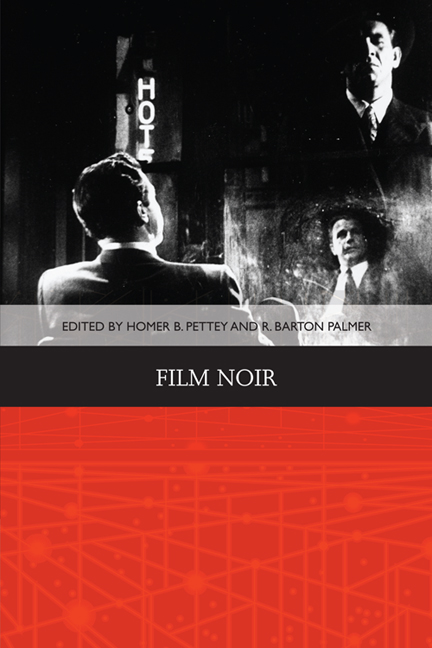Book contents
- Frontmatter
- Contents
- List of Illustrations
- Acknowledgements
- Notes on the Contributors
- Introduction: The Noir Turn
- 1 The Cinema of Uncertainty and the Opacity of Information from Louis Feuillade's Crime Serials to Film Noir
- 2 Warning Shadows: German Expressionism and American Film Noir
- 3 Hard-boiled Tradition and Early Film Noir
- 4 Cold War Noir
- 5 Noiring the Pitch: The Conflicted Soundtracks of Out of the Past, The Blue Gardenia and The Long Goodbye
- 6 Split Screen: Sound/Music in The Stranger/Criss Cross
- 7 Gender and Noir
- 8 The Subversive Shade of Black in Film Noir
- Postscript: A History of Our Writing about Film Noir
- Selected Book Chapters on Film Noir
- Selected Film Noir Books
- Selected Guide to Film Noir
- Index
2 - Warning Shadows: German Expressionism and American Film Noir
Published online by Cambridge University Press: 05 August 2016
- Frontmatter
- Contents
- List of Illustrations
- Acknowledgements
- Notes on the Contributors
- Introduction: The Noir Turn
- 1 The Cinema of Uncertainty and the Opacity of Information from Louis Feuillade's Crime Serials to Film Noir
- 2 Warning Shadows: German Expressionism and American Film Noir
- 3 Hard-boiled Tradition and Early Film Noir
- 4 Cold War Noir
- 5 Noiring the Pitch: The Conflicted Soundtracks of Out of the Past, The Blue Gardenia and The Long Goodbye
- 6 Split Screen: Sound/Music in The Stranger/Criss Cross
- 7 Gender and Noir
- 8 The Subversive Shade of Black in Film Noir
- Postscript: A History of Our Writing about Film Noir
- Selected Book Chapters on Film Noir
- Selected Film Noir Books
- Selected Guide to Film Noir
- Index
Summary
PROLOGUE
German Expressionism is called one of the most important influences on American film noir so often as to seem self-evident. What is usually meant, though, is not the Expressionist movement in the arts. When it comes to film noir, (German) Expressionism stands for The Cabinet of Dr. Caligari (1919/20) and the dark distinctiveness of the best-known films of the Weimar Republic that followed, from 1919 to early 1933, the end of World War I to the Nazi regime. Many films produced in Germany during that time are far from noir, but memory and viewing availability have been selective. Certain Weimar titles and directors come back again and again in the vast literature on film noir.
Noir's inheritance from Weimar cinema has been seen in two different ways: (1) resemblances in style, structure and themes, especially a visual language that menaces the characters while seducing the audience, conveying anguish or worse for characters trapped by uncertainties and betrayals. Framing stories sometimes lead to the past (via flashback) where most of the story takes place, a structure that, in this kind of film, underscores fatalism: it is too late – it has already happened; and (2) skills and cinematic experiences brought to Hollywood by the flood of emigres from the German film industry (regardless of national origin) fleeing the Hitler regime during the 1930s – directors, cinematographers, editors, writers, composers, producers, actors and almost every other trade – that could be put to new use when the time came.
Paul Schrader's 1972 ‘Notes on film noir’ is still one of the most influential essays on the subject. Schrader devotes an entire section to ‘The German Influence’:
Hollywood played host to an influx of German expatriates in the Twenties and Thirties, and these filmmakers and technicians had, for the most part, integrated themselves into the American film establishment … But when, in the late Forties, Hollywood decided to paint it black, there were no greater masters of chiaroscuro than the Germans. The influence of expressionist lighting has always been just beneath the surface of Hollywood films, and it is not surprising, in film noir, to find it bursting out full bloom.
- Type
- Chapter
- Information
- Film Noir , pp. 38 - 57Publisher: Edinburgh University PressPrint publication year: 2014



